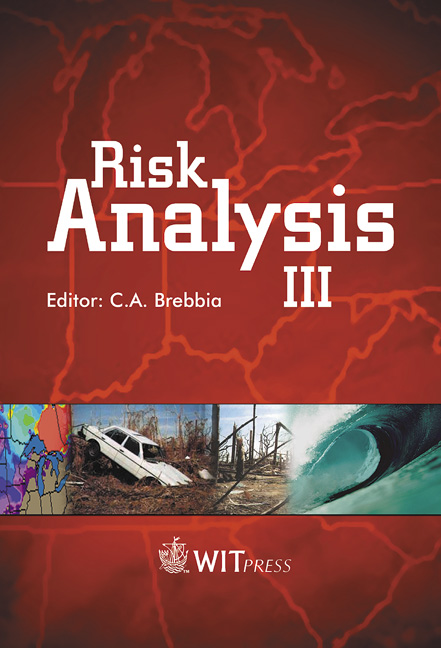Ranging Scales In Spatial Landslide Hazard And Risk Analysis
Price
Free (open access)
Transaction
Volume
31
Pages
Published
2002
Size
1870 kb
Paper DOI
10.2495/RISK020691
Copyright
WIT Press
Author(s)
T. Glade
Abstract
Landslides are part of the natural environment and affect economy and communities worldwide at various scales. Consequently, methods of assessing landslide risk depend heavily on specific demands. Within this frame, spatial landslide hazard and risk assessments are an important tool to support local and regional communities. These assessments include hazard and risk analysis, risk perception and a sustainable risk management. In Bildudalur, Iceland, hazard analysis was performed at 1:5,000 scale and is build on landslide hazard determined by a combination of heuristic analysis, in particular geomorphological assessment, and process modelling. The investigation was focussed on debris flows and rock falls only. Resulting landslide maps give run-out distances of different sized landslide events. This information is assigned to hazard classes expressing through its magnitude the probability of occurrence of a given magnitude within a given region. Risk analysis in Rheinhessen, Germany is based on landslide hazard derived from multivariate statistical analysis at scale 1:25,000. Landslide types were not differentiated specifically, however, most landslides in this region are shallow, translational earth and debris slides and flows. Risk elements were mapped and categorized from aerial photographs and land use plans. Potential damage was calculated as average values based on official German statistics sources. Due to missing information, vulnerability was assigned as 1 (highly vulnerable) - thus analysis returns a worst case scenario. Resulting landslide risk map identifies high risk areas in urban settings. Within their scale of investigation, both approaches demonstrate their importance for prevention strategies, in particular for planning and mitigation purposes. The examples are linked to an overall scheme of landslide risk assessment, which has the potential to include other natural hazards and consequently might lead to a mutli-natural risk assessment.
Keywords





